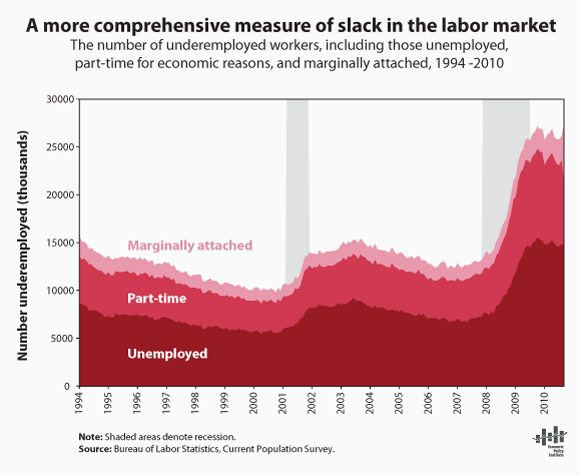December marks the third anniversary of the start of the Great Recession. Even though the recession officially ended well over a year ago, unemployment as well as underemployment remain well above pre-recession levels. The current unemployment rate of 9.6 percent does not reflect the millions of people who are working part time because they cannot find full-time work, or those “marginally attached” workers who are able and want to work but are so discouraged they have given up looking. These three categories comprise the underemployed, and in October, the most recent month for which data are available, the official underemployment rate stood at 17 percent. The Figure, from EPI’s forthcoming State of Working America Web site, shows how the number of unemployed, involuntary part-time, and marginally attached workers has changed since 1994. As it shows, all three categories have seen sharp rises, particularly since the start of the recession in 2007.

Although it is not cited as often as the unemployment rate, underemployment is another good indication of the state of the labor market. The large numbers of workers who have stopped looking for jobs or can only find part-time work suggest that high rates of unemployment will likely persist even when more jobs are created. Moreover, even the 17 percent underemployment rate does not include people who are working full-time but have had to take jobs below their skills, training or experience level.




